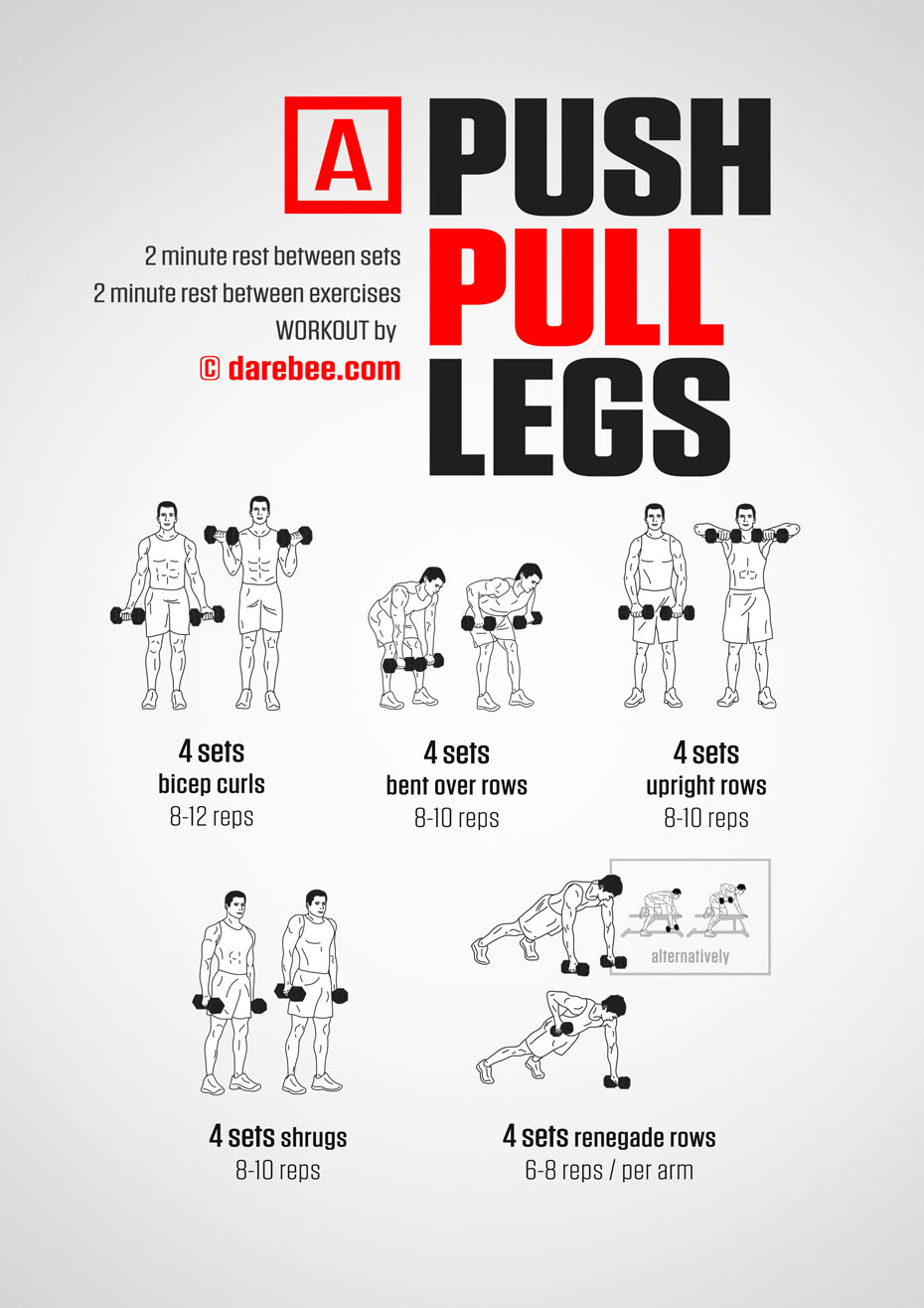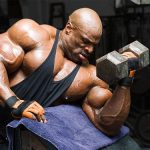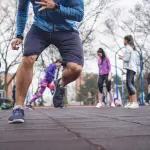A pull day workout targets the muscles you use to pull. It’s an essential part of a balanced fitness routine.
Exercising at home has become increasingly popular. Pull day workouts can be easily done without a gym. You don’t need fancy equipment. Just a few basic tools and your body weight. This approach saves time and money. You can fit workouts into your schedule.
It’s perfect for busy people. Home workouts offer privacy and comfort. They let you focus without distractions. You can adjust your routine to suit your needs. This flexibility helps maintain motivation. Discover how simple it is to get strong at home. Explore effective exercises for your pull day. Achieve fitness goals without leaving your house. Enjoy the convenience and benefits of working out at home.

Credit: www.ativafit.com
Introduction To Pull Day
Welcome to your pull day workout at home! Pull day focuses on exercises that engage the muscles of the back, shoulders, and arms. It’s an essential part of a balanced fitness routine. You don’t need a gym to achieve a strong and toned upper body. With some simple equipment and dedication, you can see great results from your home workouts.
Benefits Of Pull Exercises
Pull exercises are crucial for building upper body strength. They target your back, shoulders, and arms. These exercises help improve posture and reduce the risk of injury. Pull workouts can also boost your grip strength. Strong grip supports everyday activities and other workouts. Pull exercises balance out the push movements in your routine. A balanced routine helps maintain muscular symmetry.
Pull Day Vs Push Day
Pull day focuses on muscles used to pull objects toward the body. This includes the back, biceps, and rear shoulders. Push day targets muscles used to push away from the body. These are chest, triceps, and front shoulders. Both days are vital for a balanced workout plan. They ensure all major muscle groups get attention. Alternating between pull and push days aids muscle recovery. This approach maximizes overall strength and growth.
Setting Up Your Home Gym
Creating an effective pull day workout at home requires the right setup. With a few pieces of equipment, you can achieve a comprehensive workout. It’s important to use your space wisely. This ensures a comfortable and safe environment.
Essential Equipment
Start with a set of resistance bands. They are versatile and affordable. Choose a variety of strengths for different exercises. A pull-up bar is a must-have for pull day. It doesn’t take much space. Consider adjustable dumbbells. They offer different weights in one set. This keeps your setup compact. For those with more space, a rowing machine can be beneficial. It adds more variety to your workout routine.
Space Optimization Tips
Identify a dedicated area for your workouts. This helps maintain focus. Consider using a spare room or garage corner. Keep equipment organized with storage racks or shelves. This prevents clutter and maximizes space. Use mirrors to make small areas feel larger. They also help with form correction. Ensure there is enough room for movement. This reduces the risk of injury. Good ventilation keeps the area comfortable. Use fans or open windows for fresh air. Proper lighting creates a motivating atmosphere. Use bright lights or natural light sources.
Warm-up Routine
Before diving into your pull day workout, warming up is crucial. A good warm-up routine helps prepare your muscles for the exercises ahead. It reduces the risk of injury and boosts performance. A well-designed warm-up includes dynamic stretches and activation exercises. These elements are essential for a successful home workout.
Dynamic Stretches
Dynamic stretches improve flexibility and increase blood flow to your muscles. Arm circles are a great start. Stand with feet shoulder-width apart. Extend your arms and make small circles. Gradually increase the circle size. This warms up your shoulders and arms.
Incorporate torso twists next. Stand tall and place hands on hips. Rotate your upper body from side to side. Keep your hips stable. This stretch targets your core and back muscles. Dynamic stretches prepare your body for more intense pull exercises.
Activation Exercises
Activation exercises wake up specific muscle groups. They ensure efficient muscle engagement during your workout. Try scapular push-ups first. Get into a plank position. Keep arms straight and squeeze shoulder blades together. Release and repeat.
Next, perform bent-over rows with light weights. Bend your knees slightly. Lean forward, keeping your back straight. Pull the weights toward your chest. Focus on squeezing your back muscles. Activation exercises are key for stronger, safer workouts.

Credit: darebee.com
Back Exercises
Explore effective pull day workouts at home to strengthen your back. Try resistance bands for rows and pull-aparts. Engage your muscles with dumbbell exercises like bent-over rows and deadlifts for a strong, healthy back.
If you’re looking to build a strong and toned back at home, you’re in the right place. Back exercises are essential for improving posture, enhancing strength, and preventing injuries. Whether you’re new to working out or a seasoned fitness enthusiast, you’ll find these exercises accessible and effective. ###Pull-ups Variations
Pull-ups are a powerhouse move for your back muscles. They might seem daunting, but there are variations that cater to all skill levels. Start with assisted pull-ups using resistance bands if you’re a beginner. Feeling more confident? Try wide grip pull-ups to target different muscle groups. Have you considered using a door frame pull-up bar? It’s an affordable tool that brings versatility to your workout. Experiment with neutral grip pull-ups to engage your lats differently. Remember, consistency is key. How often can you challenge yourself to reach higher and pull harder? ###Bent-over Row Techniques
Bent-over rows are perfect for strengthening the mid-back. With proper form, you can maximize your gains while avoiding injury. The key is maintaining a flat back and controlled movement. Use household items like water jugs or backpacks filled with books as your weights. Focus on squeezing your shoulder blades together at the top of the movement. This small adjustment can make a big difference in muscle engagement. Are you keeping your elbows close to your body? This technique ensures your form is spot on and targets the right muscles. Integrate these exercises into your pull day routine at home, and watch your back transform. How will you take your workout to the next level today?Bicep Workouts
Engaging in bicep workouts at home can be both effective and fun. With minimal equipment, you can achieve great results. Building bicep strength enhances arm definition. It also supports everyday tasks. Let’s explore some effective home exercises for your biceps.
Dumbbell Curls Variations
Dumbbell curls are a staple for bicep growth. Start with the classic standing curl. Hold a dumbbell in each hand. Arms at your sides. Curl the weights up towards your shoulders. Keep elbows close to your body. Lower them slowly back down.
Hammer curls offer a slight twist. Hold the dumbbells with palms facing each other. This targets different muscle fibers. Perform the curls in the same motion. For a challenge, try alternating curls. Lift one dumbbell at a time. Focus on control and form.
Resistance Band Exercises
Resistance bands are versatile and easy to store. They provide consistent tension. Begin with standing bicep curls. Step on the band with both feet. Grip the handles. Keep your elbows close to your body. Pull the band upwards. Maintain a slow, steady pace.
Another great exercise is the seated curl. Sit on the floor. Extend your legs. Loop the band under your feet. Hold the handles with palms up. Curl the band towards your shoulders. Focus on keeping your core stable. Feel the burn in your biceps.
Rear Deltoid Focus
Targeting the rear deltoids in a pull day workout at home enhances shoulder stability and posture. Simple exercises like rear delt rows and band face pulls can be included. These movements require minimal equipment and effectively build strength.
### Rear Deltoid Focus Focusing on the rear deltoids is crucial for a balanced and strong upper body. Many people overlook these muscles, but they play a key role in shoulder stability and posture. Working on your rear delts at home can be simple and effective with the right exercises. ###Face Pulls At Home
Face pulls are a fantastic way to target your rear deltoids. You might think you need a gym for this, but you can easily do it at home with a resistance band. Anchor the band at shoulder height—maybe around a doorknob or a sturdy piece of furniture. Stand facing the anchor point, grab the band with both hands, and step back until you feel tension. Pull the band towards your face, keeping your elbows high and squeezing your shoulder blades together. Aim for 3 sets of 12-15 reps. Notice how your rear delts engage with each pull. Can you feel the difference compared to when you skip them? ###Reverse Fly Techniques
Reverse flys are another excellent exercise for your rear deltoids. You don’t need fancy equipment for this—just a pair of light dumbbells or even water bottles. Stand with your feet shoulder-width apart and bend at the hips, keeping your back straight. Let the weights hang down, palms facing each other. Lift the weights out to the sides, squeezing your shoulder blades together at the top. Perform 3 sets of 10-12 reps. Experiment with this: try different arm angles to see which hits your rear delts the best. Are you noticing how different angles can change the intensity? By incorporating these exercises into your routine, you’re not just strengthening your shoulders. You’re also investing in better posture and overall upper body function. So, what’s stopping you from adding these to your pull day workout?Core Integration
Core integration plays a crucial role in a pull day workout at home. It strengthens your midsection, supports your back, and improves balance. A strong core enhances your overall strength and stability. Incorporate core exercises to maximize your workout efficiency.
Plank Variations
Plank variations target your core muscles effectively. Begin with the standard plank. Keep your body straight and hold for 30 seconds. Engage your core to maintain stability. Try side planks for a different challenge. Support your body on one arm and foot. Switch sides after 20 seconds. Include the forearm plank to intensify the workout. Lower your body onto your forearms and hold. Each plank variation enhances core strength.
Russian Twists
Russian twists focus on your oblique muscles. Sit on the ground with knees bent. Lean back slightly and lift your feet off the floor. Hold a weight or a ball with both hands. Twist your torso to the right, then to the left. Keep your core engaged throughout the movement. Perform 15 twists on each side for maximum effect. This exercise builds rotational strength in your core.
Cool Down And Recovery
A pull day workout at home benefits from a good cool down and recovery routine. Stretching muscles helps reduce soreness and improve flexibility. Hydration supports muscle repair, aiding in quicker recovery after intense exercises.
After completing an intense pull day workout at home, it’s crucial to focus on cool down and recovery. This phase helps prevent injuries and boosts your overall performance. It’s more than just a routine; it’s a vital part of your workout strategy. ###Stretching Exercises
Stretching your muscles after a workout can significantly reduce soreness. Target areas that worked hard, like your back, shoulders, and biceps. Simple stretches, like a standing toe touch or a shoulder stretch, can make a big difference. Consider adding dynamic stretches to improve flexibility. A cat-cow pose or arm circles can enhance your range of motion. These exercises are quick but effective. Think about how much better you’d feel with a few extra minutes dedicated to stretching. Your body will thank you tomorrow. ###Importance Of Rest
Rest is a game changer in any fitness routine. It allows your muscles to recover and grow stronger. Skipping rest can lead to fatigue and even injury. Imagine pushing a car without refueling—eventually, it will run out of gas. Your body works the same way. Give it the rest it needs to perform at its best. Consider adding rest days into your weekly schedule. Listen to your body and prioritize sleep. Quality rest can elevate your progress and enhance your workout results. Have you ever noticed how much more energized you feel after a good night’s sleep? That’s the power of proper recovery.Tracking Progress
Pull day workouts at home help build strength by focusing on back and bicep muscles. Tracking progress is essential to see improvements and stay motivated. Use simple logs to record sets, reps, and weights regularly.
Tracking your progress in a pull day workout at home is crucial for staying motivated and reaching your fitness goals. Without knowing where you started and how far you’ve come, it’s easy to lose sight of your accomplishments. Keeping track of your progress not only helps you see improvements but also identifies areas needing more focus.Keeping A Workout Log
Maintaining a workout log is a simple yet effective tool for tracking your progress. Start by jotting down the exercises you perform and the number of reps and sets completed. Use a notebook or a digital app to keep everything organized. This approach allows you to see your improvement over time, keeping you motivated. Update your log regularly, at least once a week. Consistency is key. You’ll notice patterns and can adjust your workout to challenge yourself further. Have you tried comparing your current performance with last month’s? It’s an eye-opener!Signs Of Improvement
How do you know you’re getting stronger? Look for signs beyond just increased reps. You may find that exercises become easier or recovery time shortens. Pay attention to your energy levels throughout the day. Are you feeling more energetic after workouts? That’s a great sign. Sometimes, subtle changes like better posture or increased endurance during daily tasks can indicate progress. Are you noticing any of these improvements? Celebrate them! They’re proof that your hard work is paying off.
Credit: www.facebook.com
Adapting Your Routine
Adapting your routine is crucial for continuous growth and motivation in your pull day workout at home. Over time, your body gets used to the same exercises, leading to a plateau in progress. By making small adjustments, you can keep your workouts challenging and exciting.
Increasing Intensity
Do you ever find yourself breezing through your workout, barely breaking a sweat? This might be the perfect time to increase intensity. Adding more reps or reducing rest periods can make a big difference. Consider using resistance bands or weighted backpacks to add extra resistance.
Think about how you can push yourself a bit more during each session. Increasing the tempo of your movements can also elevate your heart rate and enhance muscle engagement. It’s all about challenging your muscles in new ways.
Incorporating New Exercises
Have you tried mixing up your pull exercises lately? Adding new moves can target different muscle groups and keep your routine fresh. Consider exercises like inverted rows using a sturdy table or towel pull-ups on a door.
Look around your home for creative equipment options. You might surprise yourself with what you can use. Adding variety not only keeps you interested but also prevents muscle adaptation, allowing for continued growth.
So, what’s holding you back from adapting your routine? Change can be intimidating, but the rewards are worth it. Challenge yourself to make these adjustments and witness the transformation in your pull day workouts at home.
Frequently Asked Questions
Can You Do Pull Day At Home?
Yes, you can do a pull day at home. Use resistance bands, pull-up bars, or household items like towels. These tools effectively target muscles such as the back and biceps. Regular home workouts can build strength without gym equipment. Stay consistent for the best results.
What Exercises Are On Pull Day?
Pull day exercises focus on back, biceps, and rear delts. Key exercises include pull-ups, bent-over rows, bicep curls, and face pulls. Incorporate lat pulldowns and deadlifts for added strength. Use proper form to maximize muscle engagement and prevent injury during workouts.
How Can I Train My Pull Muscles At Home?
Train pull muscles at home with pull-ups, resistance bands, and rows. Use a sturdy bar for pull-ups. Resistance bands offer versatile exercises. Try bent-over rows using weights or household items. Maintain proper form and consistency for effective results.
Is 3 Exercises Enough For Pull Day?
Three exercises can be effective for a pull day, targeting different muscle groups. Focus on compound movements like pull-ups, rows, and deadlifts. Adjust intensity and volume for personal goals. Ensure proper form and gradually increase weights for progress. Always listen to your body and rest adequately.
Conclusion
A pull day workout at home is doable and effective. You don’t need a gym. With simple equipment, you can build strength. Focus on exercises like pull-ups, rows, and curls. These target key muscle groups. Take breaks and stay hydrated.
Listen to your body and adjust as needed. Consistency is key for progress. Remember to warm up before starting. Cool down after your session to avoid injuries. Enjoy your workout journey and celebrate small victories. Stay motivated and keep pushing your limits.
Your home workout can lead to great results.




